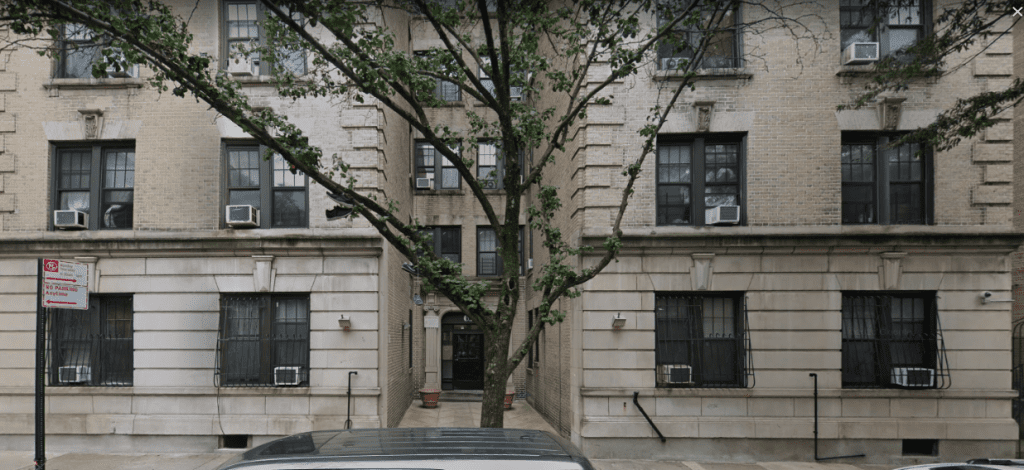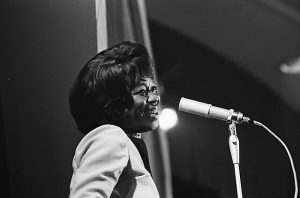Blog, Chroniclers, Jazz on the Tube Interview, Podcasts
Interview with Jack Sullivan
Download the mp3 here
Click here for more information about the book New Orleans Remix by Jack Sullivan
With the critical role it played in the origins of jazz, R & B and early rock and roll, and funk, New Orleans can rightly stake a claim for being the country’s most important musical hotbed.
However, anyone who thinks the city’s glory days as a major creative crossroads are over would be gravely mistaken as Jack Sullivan amply documents in his new Book New Orleans Remix.
In fact, New Orleans has been experiencing a major artistic renaissance since the 1990s.
Though temporarily and violently interrupted by the failure of the US Army Corps of Engineers levee system in 2005 (often referred to the in short hand “Katrina”), the city is as vital as ever and should be a destination for every lover of music especially jazz.
Click here to keep up with Jack Sullivan
Click here to hear NOLA music in NYC
Click here for more information about the book New Orleans Remix by Jack Sullivan
Video references
Treme Brass Band
The Treme Brass Band performs a second line for the Spotted Cat when it sold and changed hands in April of 2009. Fortunately, the club’s format survived the change of ownership.
Video produced by Jazz on the Tube’s FoodMusicJustice project (temporarily dormant, but always ready for new energy.)
Panorama Jazz Band
The band was formed in 1995 by Ben Schenck.
Started as a traditional New Orleans jazz band, it’s continuously added music to its repertoire from the Caribbean and Latin America, Eastern Europe and the Balkans and this piece from the South African composer Hugh Masekela.
Aurora Nealand on alto sax and Ben Schenck on clarinet. Filmed at the French Quarter Jazz Fest in 2008 by Jazz on the Tube.
The artistic vanguard
New Orleans born poet Chuck Perkins recites the names of the musicians who returned to New Orleans after the levee failures – “my artist vanguard who came back when times were hard…who second lined my people all the way back home…” Produced by Jazz on the Tube’s FoodMusicJustice project in 2009.
Many of the artists named in the song are profiled in New Orleans Remix.
– Ken McCarthy
Jazz on the Tube
Music credit: The Jazz on the Tube podcast theme song is “Mambo Inferno” performed by The Manhattan School of Music Afro-Cuban Jazz Orchestra conducted by Bobby Sanabria from the CD ¡Que Viva Harlem!
Blog, Chroniclers, Jazz on the Tube Interview, Podcasts
Interview with John Gennari
Download the mp3 here
Click here for more information about the book Flavor and Soul by John Gennari
“There is no other than Gennari—a huge-hearted scholar of voracious curiosity and impeccable taste—to productively mine what happens when black and Italian meet. He sees the third thing those two galaxies of history and self-expression create at the crossroads.
Cooking and eating, sports, film, and, of course, music are where the most potent and telling cultural action is, where we go to experience the true beauty and meaning of life in a world where we may know ourselves deeply along cultural lines but then find so much more at the recombinant intersection.
Flavor and Soul is brilliant, encyclopedic scholarship that also accomplishes the rare work of speaking directly to and from the heart. This is a passionate treasure book of scholarship and ultimately a handbook for living a rich, surprising, culturally-guided life.”
(Elizabeth Alexander, author of The Light of the World: A Memoir)
Famed Sicilian-American New Orleans record producer Cosimo Matassa (born 1926) recalls life in the French Quarter growing up in the 1930s and 40s.
Download the mp3 here
Click here for more information about the book Flavor and Soul by John Gennari
Not covered in the interview, but this seem like a good place to put it for now:
“I’m beginning to find out that an awful lot of early jazz history is totally wrong. Here is a quick example. There are a number of well-known New Orleans trumpet players who came out of New Orleans at the same time. A third of them were White Italians, and the Italians were just as despised as Blacks and they lived in the same neighborhoods and they played the same music. Gerald Early, a very famous professor of African-American history at Washington University always starts his lectures showing that whites have been in this from day one. It’s an American music.”
– David Owsley
Source: https://syncopatedtimes.com/a-conversation-with-saint-louis-jazz-historian-and-radio-personality-dennis-owsley/
Note from Ken: Sicily, which was the source of most of the Italians who landed in New Orleans in the late 19th and early 20th century, has a rich tradition of…brass bands that march in well put together uniforms. If I were a betting man, I’d say African-Americans adopted this tradition from their Sicilian brothers in New Orleans and made it their own.
Video references
Jon Batiste on the influence of opera on Louis Armstrong
The opening cadenza to West End Blues – one part opera, one part blues
Louis Armstrong and opera
After completion of my season at the Metropolitan Opera during the 1950’s, I would go to the Sands Hotel in Las Vegas where Louis and I performed both singly and together for a few weeks. We had special material written for us where we reversed roles, doing opera versus jazz; he singing ”Vesti la giubba” and I singing ”Honeysuckle Rose.” Between shows, he would regale me with reports of his European tours, especially in Italy, where he made a point of visiting opera houses, and tell me, ”Man, I met all of them cats over there.”
ROBERT MERRILL
New Rochelle, N.Y.
From a letter to the New York Times dated April 2, 2000
Louis Prima, his then-wife and “straight man” Keely Smith, Sam Butera and the Witnesses
Frank Sinatra and Count Basie and his Orchestra, arranged and conducted by Quincy Jones (1965)
Qunicy Jones talks about Frank Sinatra
New Orleans “soul” music – Aaron Neville sings “Ave Maria”
Click here for more information about the book Flavor and Soul by John Gennari
– Ken McCarthy
Jazz on the Tube
Music credit: The Jazz on the Tube podcast theme song is “Mambo Inferno” performed by The Manhattan School of Music Afro-Cuban Jazz Orchestra conducted by Bobby Sanabria from the CD ¡Que Viva Harlem!
Blog, Chroniclers, Jazz on the Tube Interview, Podcasts
Interview with Carol Bash
Download the mp3 here
Do you know Mary Lou?
Here’s why you should…
She held her own in the rough and tumble world of Kansas City jazz in the 1930s.
She was a “go to” arranger for Duke Ellington, Count Basie and Benny Goodman.
She mentored “young lions” like Bud Powell, Thelonious Monk, Dizzy Gillespie and Tadd Dameron.
Photo: Left to right: Jack Teagarden, Mary Lou Williams on the piano, Tadd Dameron, and Dizzy Gillespie (in worshipful pose)
Click here for more information about Carol Bash’s film Mary Lou Williams The Lady who Swings the Band
Compositions/arrangements by Mary Lou Williams
“Roll ‘Em” – Benny Goodman Orchestra
“Trumpets No End” – Duke Ellington Orchestra
“Oo-Bla-Dee” – Dizzy Gillespie Big Band
63 Hamilton Terrace, New York NY

– Ken McCarthy
Jazz on the Tube
Music credit: The Jazz on the Tube podcast theme song is “Mambo Inferno” performed by The Manhattan School of Music Afro-Cuban Jazz Orchestra conducted by Bobby Sanabria from the CD ¡Que Viva Harlem!
Blog, Chroniclers, Jazz on the Tube Interview
Interview with Howard Mandel of the Jazz Journalists Association
Download the mp3 here
A lot goes into the creation of our “jazz world.”
First come the musicians. Equally necessary is the audience. Also included is everyone who contributes to the creation and education of the audience – and that’s where our jazz journalists come in.
Author, producer and veteran jazz writer with over 40 years in the trenches, Howard Mandel is the president of the Jazz Journalists Association.
In this wide ranging conversation, we talk about Howard’s work including his books “Future Jazz” and “Miles, Ornette, Cecil: Jazz Beyond Jazz” and the pleasures and challenges of being a jazz writer in the digital era.
Jazz heroes
Among the many intriguing initiatives the Jazz Journalists Association is involved in their annual Jazz Heroes awards is one the most impressive.
Every year, community members nominate “advocates, altruists, activists, aiders and abettors of jazz” who work to help jazz flourish in their local communities.
If you’re a writer or documenter of jazz with video, audio, photography – on the web or via broadcasting – or if you just appreciate these arts and want to support them and follow some truly interesting work check out the Jazz Journalists Association.
– Ken McCarthy
Jazz on the Tube
Music credit: The Jazz on the Tube podcast theme song is “Mambo Inferno” performed by The Manhattan School of Music Afro-Cuban Jazz Orchestra conducted by Bobby Sanabria from the CD ¡Que Viva Harlem!
Blog, Chroniclers, Latin Jazz, Puerto Rico, Video, Video and audio
Interview
Download the mp3 here
Jazz on the Tube interviews music journalist Tomás Peña.
Peña is editor of JazzdelaPena.com and co-editor/contributing writer to the Latin Jazz Network. He also writes the monthly column “The Latin Side of Hot House” for Hot House Magazine.
In this call, we talk about the mostly unknown and little appreciated contributions of Puerto Rican musicians to the development of jazz from the art form’s very earliest days through its commercial peak and right through to our present era.
Here’s the tune that got Tomás started on Latin jazz.
Wes Montgomery – Bumpin’ on Sunset…
Other musical references
1919 recording of John Reese Europe & the 369th U.S. Infantry “Hell Fighters” Band: “The Darktown Strutters’ Ball.” The band included 18 musicians from Puerto Rico selected for their high level of musicianship
Juan Tizol performs his composition “Caravan” with the Duke Ellington Orchestra
Ray Barretto and band perform Thelonious Monk’s “I Mean You” at his induction ceremony as an NEA Jazz Master (2006)
– Ken McCarthy
Jazz on the Tube
P.S. Our unique programming is made possible by help from people like you. Learn how you can contribute to our efforts here: Support Jazz on the Tube
Thanks.
Music credit: The Jazz on the Tube podcast theme song is “Mambo Inferno” performed by The Manhattan School of Music Afro-Cuban Jazz Orchestra conducted by Bobby Sanabria from the CD ¡Que Viva Harlem!
Artist-Educators, Blog, Chroniclers, Jazz on the Tube Interview, People, Podcasts

Interview
Download the mp3 here
Musician, educator and historian Bruce Conforth introduces us to the real Robert Johnson.
Far from the one-dimensional “native genius” he is often portrayed as, Robert Johnson was a well read, well traveled, versatile artist whose genius was no accident.
Dead at the age of 26, in his short life Johnson’s art left an indelible mark on American and world music.
Conforth, a guitarist and harmonica player, has been studying Johnson’s life and work for 40 years.
– Ken McCarthy
Jazz on the Tube
P.S. Our unique programming is made possible by help from people like you. Learn how you can contribute to our efforts here: Support Jazz on the Tube
Thanks.





